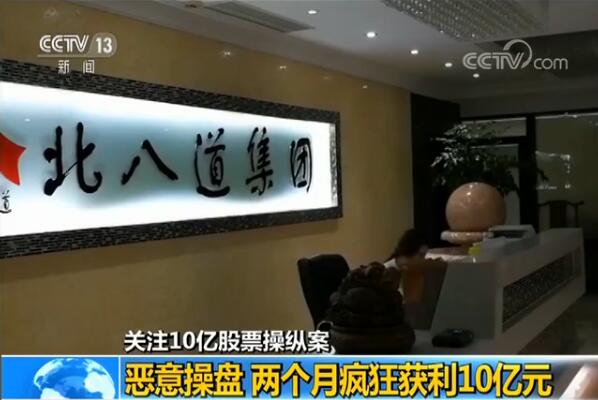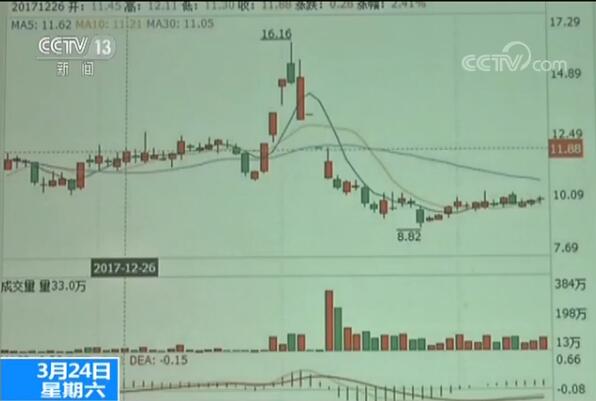In the English dictionary, Rugby has two meanings: one is football; The second is the place name. rugby, a small town in Warwickshire, England, is the hometown of rugby. 198 years ago, on the lawn of Rugby College, a 16-year-old football boy ran with the ball in his arm, which was an obvious foul, but it finally became a sport. This boy is wilhelm weber Webbellis.
Portrait of wilhelm weber EllisAn ordinary moment of gloryTo discuss the origin of rugby, we should start with the life of wilhelm weber Ellis.
William’s life is both plain and legendary. On November 24th, 1806, he was born in Salford, Lancashire, England. He was the son of a soldier, and his father, James Ellis, was a cornet player in the Dragon Riding Team. By 1809 at the latest, James had been promoted to lieutenant and was stationed in Portugal with the troops. In 1804, James Ellis married wilhelm weber’s daughter Anne Webb in Exeter, England. In 1812, when William was only 6 years old, his father was killed in the Spanish War of Independence, and Anne received a pension of 30 pounds from the army. This pension became the basis of William’s attachment to football.
After her father died, Anne, who lost her financial resources, decided to move to rugby with her family. At that time, it was a small town with only a few thousand people, and the only thing that made the town famous in China was Rugby College. Rugby College was founded in 1567 as a grammar school. In the 1820s and 1930s, Rugby College, under the leadership of its president, Thomas Arnold, has become a famous public school in England. The public school here is different from its literal meaning, and it promotes elite-oriented secondary education. Rugby College enrolls boys within 10 miles of Fiona Fang with the town clock as the center. In 1816, 10-year-old William began his nine-year study here. During his study, William gave the impression of being "a good student and cricketer". However, some people have noticed that William is not a disciplined cricketer because "he always tends to gain an advantage through unfair cheating". This evaluation was quickly confirmed in an accident.
One day in 1823, in a fierce football match, William, who was thin, failed to get the ball several times. In desperation, he actually picked up the football and ran to the opponent’s goal. When the opponent stopped him, he ignored it and rushed straight ahead. For the established football rules at that time, you can kick the ball with your feet or even handball, but you can’t run with the ball in the game, which will be regarded as cheating. However, at that time, this foul did not attract much attention. This is because in the early 19th century, there were many student football clubs in rugby, with hundreds of large clubs and only a dozen small ones. Because the rules of modern football have not been determined, many rules were agreed temporarily before the game, and the use of hands was not absolutely prohibited during the game, William’s foul was not so eccentric.
The portrait of the game in 1823, the act of running with the ball, was only an episode in the game and did not have any influence on William’s life track. After studying in rugby for nine years, William entered Brecci North College of Oxford University (former British Prime Minister David Cameron also graduated from this college), where he participated in cricket matches between Oxford and Cambridge. In 1829, he got a bachelor’s degree, and in 1831, he got a master’s degree in literature at Oxford. Since then, he has become an evangelical priest, who went to the front to preach during the Crimean War. In 1872, at the age of 65, William died in Montone, southern France. He never married and had no children. He donated 9,000 pounds to the church, which was a huge sum at that time.If it weren’t for the title of inventor of rugby, William’s life would be unremarkable. If it weren’t for people’s exploration and pursuit later, that accidental running with the ball would be just an episode, and it would soon be lost in the long bells of the small town church.
"Collusion" between Antique Collectors and Students
As mentioned above, the invention of football happened by accident, and even the parties may not realize it. So, by what historical chance, wilhelm weber Ellis was finally established as the inventor of rugby? How did rugby become an independent sport?
The status of William as an inventor was first recorded by Mathew Bloxam, a local antique collector. In October, 1876, he wrote an article for the first time in the magazine Meteor of Rugby School. He learned from an unnamed source that "a boy who received a scholarship in this town, his name was wilhelm weber Ellis, and he ran forward with the ball in a game in 1824".
However, this account is too brief, and it also raises questions about William’s inventor. Maybe it’s to prove that what you said is true. On December 22, 1880, Matthew Brockham published an article in Meteor again, which was much more detailed than the first article. He wrote:
This boy named wilhelm weber Ellis is a scholarship kid in the town. In the football match in 1823, he grabbed the football and put it under his arm. In the football rules at that time, he should kick the ball back to the backcourt as much as possible and try not to separate it from the ball. Because the opponent can only go forward to where he catches the ball, and can’t go forward unless he kicks the ball forward or passes it to other players to kick it. In the situation at that time, most successful attacks were scored in this way. But at that time, at the moment when the ball hit the ground, the opponent might be eager to attack, which made Ellis ignore the rules for the first time. Instead of retreating as required by the rules, he grabbed the ball with his hand and rushed forward. Although I don’t know what the final result is, I don’t know what happened after this famous foul, and I don’t know when it became a common rule.
Soon after the publication of these two articles, it caused doubts from the outside world, which have not been completely eliminated until today. The doubts about William’s inventor of "rugby" mainly focus on three points: First, the time of the game. In an article in 1876, Matthew said the time of the competition was 1824, and four years later, he changed the time point to 1823, because William was not in school in 1824. This serious injury greatly reduced the reliability of Matthew’s account. The second is about the time of publication. When Matthew’s argument was published, William had died for four years, and there was no evidence from other parties in the argument, only the so-called "unnamed channel". The third is the content of the discussion. As long as we compare the two expositions in 1876 and 1880, we will find that the second one is much more detailed than the first one, which is quite a bit suspicious of the ancient school’s "making history by layers". Later expositions are to prove that the above descriptions are not empty, but it is difficult to verify whether they are true or false.
To this end, in 1895, the local old rugby association decided to investigate the origin of the sport, but the investigation team has been suffering from "unable to obtain first-hand evidence of the incident." Subsequently, a pair of brothers named Harris once testified to the investigation team that William did "gain an unfair advantage" in the football match, but whether this was the origin of rugby was not conclusive.
Compared with the origin of disagreement, William’s practice seems to be more helpful for rugby to become an independent sport. In August 1845, three students of Rugby College, Walter Shere, William Arnold and Friedlich Hutsis, got together and formulated the first rugby rules carefully. "The collision before kick-off, after the ball touches the ground or when the player’s body is empty is illegal; When a player is injured, the game must be stopped so that the injured can receive treatment … "In this rule, there are also modern rugby terms such as pre-beat, pre-pass and offside. Through the terms of these rules, we can feel the "Fair play" of the British who advocate fair competition, and we can also read out the respect for the participants. This respect is reflected in two aspects, on the one hand, it is to protect the physical safety of the contestants, on the other hand, it is to respect the sportsmanship.
This rule is printed into a pocket-sized booklet, which is all the rage on campus. Once students encounter differences in the competition, they will stop the competition and take out the rules from their backpacks to find a solution. After the rules were determined, rugby soon spread in elite schools such as Harrow and Eton, and these students brought it to universities such as Oxford and Cambridge, followed by the birth of a number of rugby clubs. On January 26th, 1871, the English Rugby League was founded in London, with 21 clubs participating. On March 27th of the same year, the world’s first international rugby match was held in Edinburgh, against England and Scotland.
The vigorous development of rugby makes rugby proud. In 1895, a stone tablet was erected in Rugby College, which read: "I hereby commemorate wilhelm weber Ellis, who ignored the football rules at that time and ran with the ball for the first time, thus drawing a clear line between football and rugby."
A memorial tablet in Rugby College about William’s invention of rugby. At this time, wilhelm weber Ellis has been dead for 23 years. The inventor didn’t know that with the help of an antique collector and classmate, rugby became a formal sport, and he was crowned as the inventor of rugby.Gentlemen’s games played by hooligans and hooligans’ games played by gentlemen.
No matter whether local antique collectors diligently research past anecdotes or Rugby college students painstakingly put the established rules into words, all they do is to distinguish rugby from football. From this perspective, rugby is not "invented", but is born out of football.
Interestingly, in the mid-19th century, when the children of Rugby College were carefully drafting the rules of rugby, football gradually entered a mature stage. In 1848, the Cambridge Rules, the first written rule of football, was born, which defined for the first time the number of participants in a football match and the form of football goals, that is, the ball needs to cross the space between or above the goalposts, no matter how high it is, as long as it is not thrown, thrown or hit by hands, it is counted as a point. In addition, the players are not allowed to wear any equipment that may threaten the lives of others. On October 26th, 1853, the Football Association held its first plenary session in a pub in London. At the meeting, Hebrew Cobo Morey, the first secretary-general, read out the Charter of Modern Football, which stipulated: "It is strictly forbidden to stumble and kick people, and all players are not allowed to catch or push the ball with their hands." These two texts define the restrictions on the use of hands in football and draw the boundaries between football and rugby.
Not only in terms of rules, football and football began to "cut", but also in terms of participants and spectators, football and football began to go their separate ways. From the middle and late 19th century, a proverb gradually spread in British society, "Football is a gentleman’s game played by hooligans; Rugby is a rogue game played by gentlemen. " This proverb vividly illustrates the personality differences between the two sports. Why is there such a personality difference between football and rugby, and what impact will this personality difference have on their development? This is also a topic worthy of elaboration.
In fact, this is still rooted in the origin of these two sports. Since its birth, football has found a bosom friend in the northern part of England where the industrial revolution sprouted. Its fans and participants are industrial workers, and they gradually turn playing football into a profession. Today, Manchester and Liverpool, located in the north of England, are traditional football towns with strong sports foundation. In rugby and other southern regions, because football originated from the campus, most of the participants are students. As an old-fashioned prestigious school, rugby’s graduates often go to prestigious schools like Oxford and Cambridge for further study, which naturally brings this sport to the ivory tower. Because the participants are mainly students, rugby has been defined as a "non-professional sport" since its birth, and most fans just rely on interest and will not earn a penny from this sport. This unprofessional watershed retains the gentleman’s reserve, but limits the development space of this sport. Money and fans flock to football, while rugby gradually declines. Even in his hometown of rugby, except for the monuments and towering goals on campus, it is hard to find traces of football.
Rugby College’s erected rugby gate. Fortunately, rugby is "doomed". Since the middle and late 19th century, with the pace of colonial expansion of the British Empire, rugby has traveled across the ocean, rapidly spreading in the United States, Canada, South Africa, Australia, New Zealand and other countries, and has become a hot project. With the internationalization of this sport, it has also begun to become attached to the modern Olympic movement. In 1883, Pierre De Coubertin, the father of the modern Olympic Movement, began to pay attention to school physical education in Britain. He believed that the failure of France in the Franco-Prussian War was partly due to the weak school physical education, in which England was far ahead. After visiting many schools in England, Coubertin noticed that rugby has become a popular sport in English campuses. Driven by it, in 1900, at the second Olympic Games, rugby was listed as an official event. With Coubertin’s resignation in 1925, his successor, Henri de Baye-latour, was not interested in the team events in the Olympic Games, so rugby was disqualified from the Olympic events. On October 9, 2009, at the plenary session of the International Olympic Committee held in Singapore, rugby sevens was confirmed as the official event of the 2016 Olympic Games. Although the number of participants, rules and forms are different from the traditional 15-a-side rugby, it can still be regarded as the return of rugby games in the Olympic Games.Despite the ups and downs in the Olympic Games, rugby has always been the darling of Commonwealth countries. In 1987, Australia and New Zealand jointly hosted the first Rugby World Cup, which has been held for nine consecutive times. Among them, in the 3rd Rugby World Cup held in South Africa, the South African springbok team, which was dominated by whites, went out as the national team and finally won the championship, which also became a landmark event of racial reconciliation in the rainbow country. Outside the Commonwealth countries, rugby has gradually evolved into a more intense and professional American football in North America, and the National Football League (NFL) plays an important role in the professional sports map of the United States. The Super Bowl, the annual finals of the American Professional Football League, is usually held on the first Sunday of February every year, which is also called "Super Sunday" and enjoys the reputation of "American Spring Festival Evening".
The hustle and bustle of rugby seems to have nothing to do with the quiet town of rugby. But the statue of wilhelm weber Ellis outside Rugby College must have witnessed the ups and downs of this sport. This statue fixed him at the age of 16, holding a football in his left hand, flying his right foot and running on the grassy field.
Statue of wilhelm weber Ellis outside Rugby College (this article is from The Paper, please download the "The Paper" APP for more original information).







